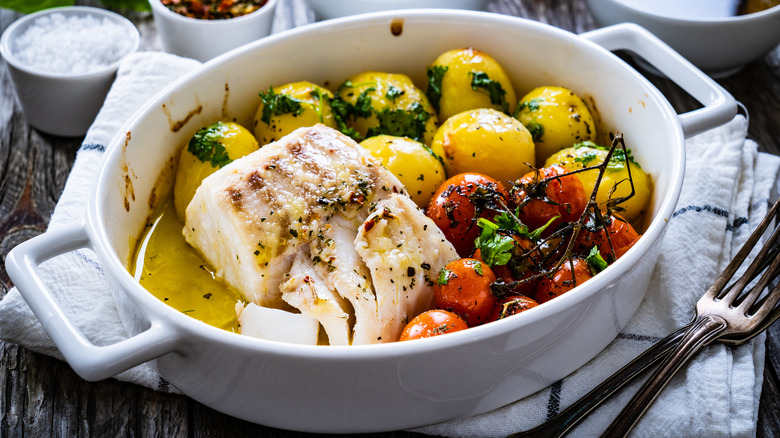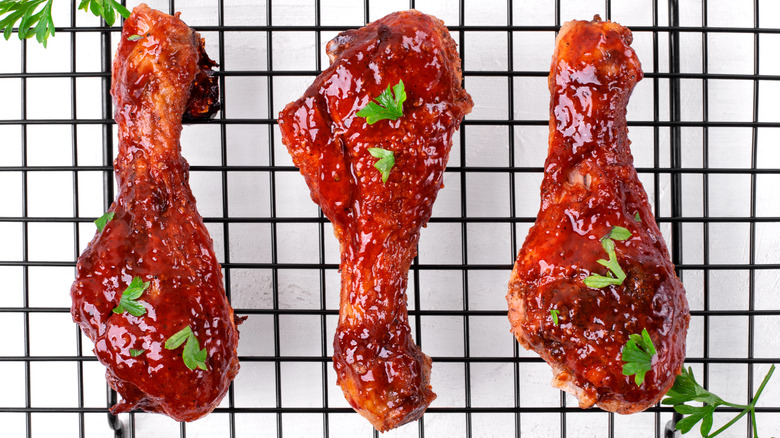Use This In Place Of Your Roasting Pan
While you can cook your chicken, turkey, or beef in any number of ways — from using a slow cooker to popping it in the oven in a baking dish — there are few methods of making the most tender meat with an extraordinary exterior texture as roasting in a roasting pan.
Roasting pans are typically large vessels with tall sides, perfect for shielding your oven's interior from juices while roasting. They are also often fitted with a rack so that the oven's heat can reach all of the meat's surfaces. Cook's Info notes that some swear by using a roasting rack, citing that allowing the heat to reach all sides of the meat avoids it steaming or baking on the bottom.
Science backs those whose convictions about meat roasting rely on convection. According to Science of Cooking, the flavor of food is improved by the Maillard reaction. The chemical reaction, most often produced by heat, transforms both the color and flavor of food. Using a roasting rack to allow heat to better reach all areas of roasting meat increases the surface area exposed to that reaction. The result is more crispiness on the outside that perfectly pairs with the moistness within.
However, not everyone has the kitchen space for cumbersome roasting pans and racks. Fortunately, there's an easy hack to remedy the absence of a roasting pan and rack.
How to hack a roasting pan
Whether you are the cook accountable for Thanksgiving turkey or you're trying to make a special occasion beef tenderloin, you'll benefit from using a roasting pan and rack. However, some simple kitchen staples that you may already have (or can easily purchase) will remedy the absence of that roasting rack.
Southern Living boasts a bulk of ideas for working around not having a roasting pan and rack. The most affordable option, though, is a disposable aluminum pan paired with a cooling rack as also recommended by Cooking Light. Not just for cookies, cooling racks will provide the same type of space for heat to reach all areas of the meat while a lasagna-sized aluminum pan will catch the drippings.
The trick with this take on roasting is to not treat this setup exactly the same as a roasting pan. Instead of setting it up and then transporting it with the meat into the oven, make sure to put it in the oven first and then rest the meat on top of the cooling rack. When finished, remove just the cooling rack (with the meat) to avoid any instability from the aluminum foil pan.
In addition to saving money spent on a roasting pan and rack, and the space to store it, cleaning time is cut down, too. There's no need to clean that foil pan, and the cooling rack will wash easily or take up far less precious space in the dishwasher.

